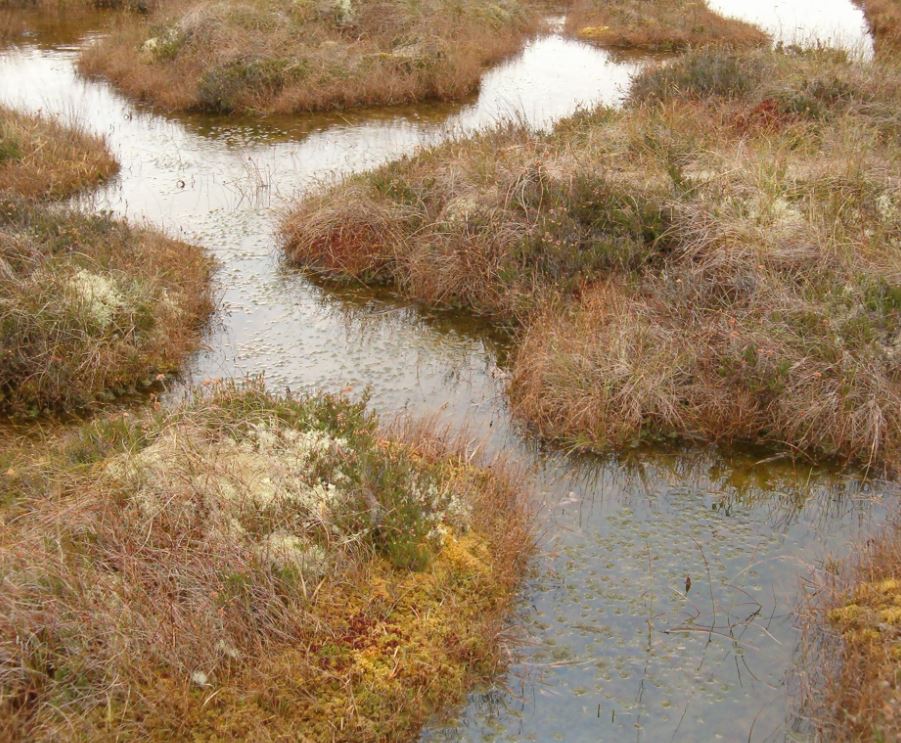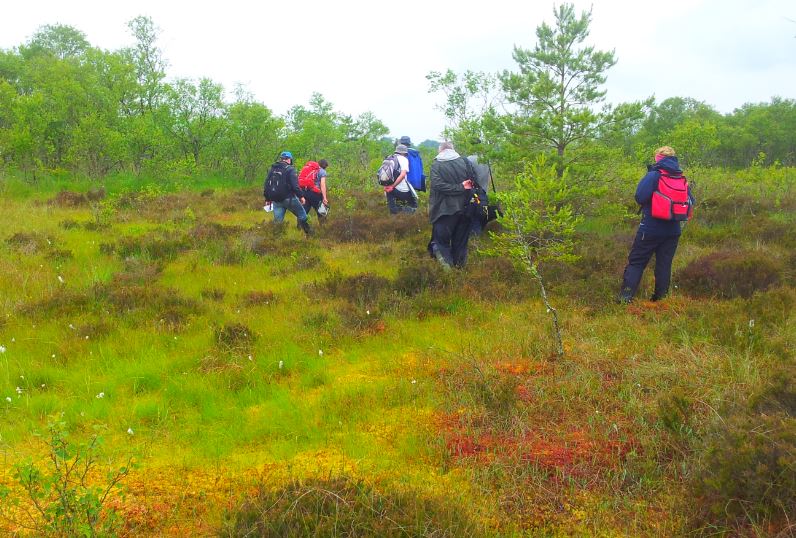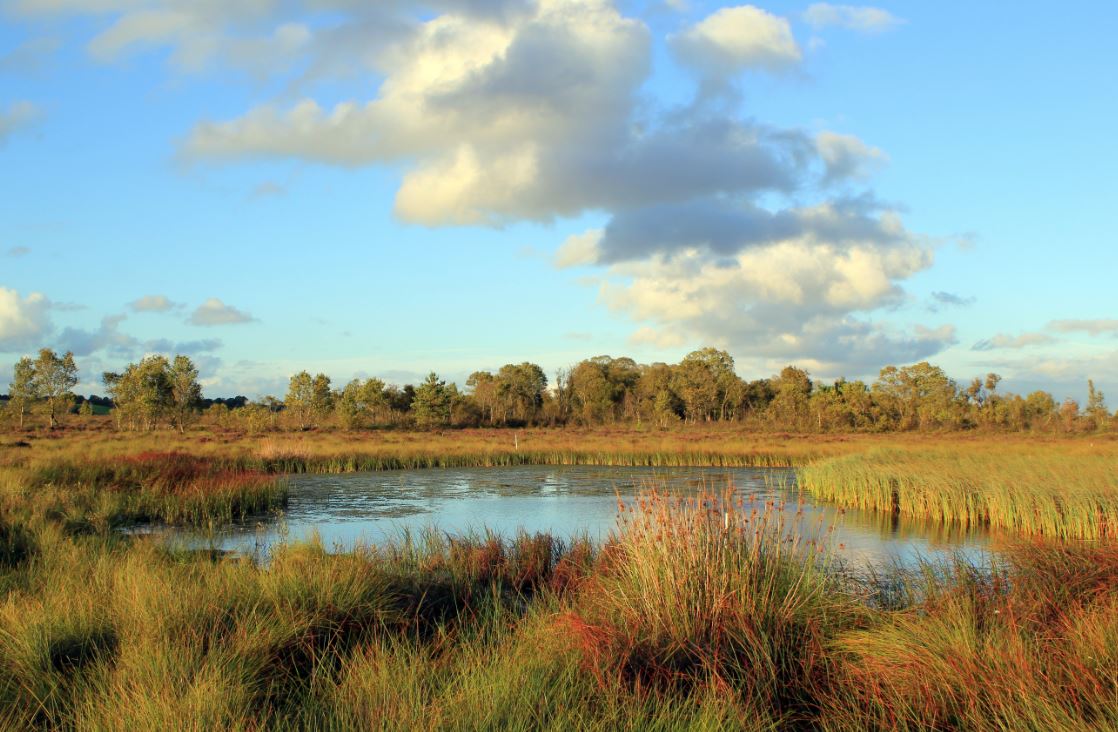Peatlands are considered to be one of the most important ecosystems of the world. This is because of their key value for biodiversity, the role they play in carbon sequestration – thus ensuring regulation of our climate, water filtration and supply, and important support for human welfare. It is now recognised that these habitats need to be conserved and protected for future generations. There are a number of ways that this type of habitat is being protected, not only in Ireland, but throughout Europe.
With the introduction of the Birds Directive and the Habitats Directive came the obligation to establish the Natura 2000 network of sites. These sites were recognised as having the highest biodiversity importance for rare and threatened habitats and species across the European Union. The Natura 2000 network of sites in Ireland, are sites that are protected under the Birds Directive as Special Protection Areas (SPAs) and sites that are protected under the Habitats Directive as Special Areas of Conservation (SACs). Clara Bog is a Special Area of Conservation. Special Areas of Conservation are selected to protect habitats and species that are rare and threatened at a European scale. A significant portion of the word’s remaining active raised bog (ARB) is found in Ireland.

Kelly and Schouten (2002) define ARBs with mean water levels near or above the bog’s surface for most of the year. Seasonal fluctuations should not exceed 20cm, and the water level should be within 10cm of the surface, except for very short periods of time.
Ireland’s bogs are among the most ecologically important across European Union States. Its blanket bogs and raised bogs are natural habitats of prime significance and are home to unique ecosystems containing rare flora and fauna. Both raised and blanket bogs are protected habitats under European and Irish Law and representative samples have been designated either as Special Areas of Conservation (SACs) under the EU Habitats Directive or Natural Heritage Areas (NHAs) under the Wildlife Acts.
Between 1997 and 2002, Ireland nominated a total of 53 raised bog sites for designation as Special Areas of Conservation under the Habitats Directive. Ireland’s peatlands have historically being used for a variety of purposes. Most damage has occurred on our peatlands as a result of cutting – both by hand and mechanically, by drainage for agriculture and by afforestation. Indeed these can be socially and economically important, but these actions are the principal causes of the deterioration of peatlands that has been observed over recent years. These habitats are in serious danger of disappearance. The provision of the necessary protective measures is urgent. The Scientific Basis for Raised Bog Conservation in Ireland Study will provide input to the development of National Raised Bog Special Area of Conservation Management Plan and site-specific restoration plans. It is envisaged that the plans will describe how the 53 raised bog Special Areas of Conservation will be managed. This will be achieved with full consultation with stakeholders, including bog owners and users and surrounding land owners.

In addition to the 53 raised bogs designated as Special Areas of Conservation, other raised bogs are protected under Irish law by the Wildlife Amendment Act and are designated as National Heritage Areas (NHAs). Between 2003 and 2005, 75 raised bogs, located mainly in the midlands, were designated as NHAs. This means that these bogs are afforded protection also as they are regulated under the Environmental Impact Assessment Directive. Of the more than 1500 raised bogs in the State, 128 are designated for nature protection as SACs or NHAs. The primary focus of the National Raised Bog Special Area of Conservation Management Plan will focus on sites that are part of the Natura 2000 network. It is recognised that the NHA raised bogs are relevant as they have some potential to provide compensatory habitat to offset SAC raised bog areas that have been lost since their designation. Aproximately 85% of the peatland area in Ireland has been lost due to activities such as: peat-cutting, afforestation, and reclamation for agriculture. It is estimated that Ireland contains 50% of the intact oceanic raised bog systems remaining in Europe. It is proposed that 3,600 hectares, of raised bog SACs and NHAs are to be protected and restored.

Raised bogs occur predominantly in the Midlands. Among the great peatlands of Ireland, Clara Bog stands out as a unique example of its kind, critical to our understanding of how these intricate systems have developed down the centuries. As probably the best studied bog in Europe, we now know a great deal about the ecology of this national nature reserve. And yet the origin of its most unique feature, confined to only 3 raised bogs in the country, is not fully understood. These are the ‘soaks’ or open water pools, with their distinctive water chemistry, drainage, and ecology – Clara has undoubtedly the best examples of these. (However, Lough Roe now has almost no open water, probably as a result of past drainage.) While the rest of the bog is poor in minerals, these pools are relatively rich, with access to ground water, possibly through subsidence, supporting such typical plants as Sedges and Bog Bean.
Because of its size, and despite peat cutting and drainage in the past, Clara Bog has an unusually wide variety of habitats and species, including some rare invertebrates and one moss found nowhere else in Ireland. There are three areas of scarce bog woodland, supporting Birch and scattered Pine. Apart from the usual animals and birds associated with bogs, such as Common Frog, Common Lizard, and Snipe, the relatively rare Merlin breeds here, and Butterflies such as the Large Heath and Peacock are common. With its history of intensive research, Clara Bog continues to be an outstandingly important scientific resource.
Sites that are SACs, like Clara Bog will have a site specific management plan produced to address its exact needs for protection and restoration. Typically the potential measures to achieve conservation objectives are recognised in two categories:

(i) Preventative measures against habitat loss including cessation of the following activities:
- Drainage of raised bog habitat or surrounding wetland habitats;
- Peat harvesting and turf cutting;
- Planting of commercial forestry;
- Burning; and
- Other damaging human activities such as water abstraction from groundwater and quarrying which can have a significant negative impact on the hydrology.
(ii) Engineered (active intervention) measures including:
- Drain blockage on high bog;
- Drain blockage in marginal areas;
- Removal of forest plantations;
- Marginal dams;
- Bunding on high bogs; and
- High bog and cut-over bog excavation/re-profiling
National Raised Bog Special Area of Conservation Management Plan for Clara Bog will include all the area that is designated as a SAC. There are currently 460 hectares in state ownership, but the entire SAC is 837 hectares. The remainder is in private ownership and is owned by several different stakeholders. There are several restoration options available for raised bog and associated habitats at Clara Bog SAC. It is proposed that a restoration plan will be developed in conjunction with local stakeholders. Clara Bog is one of many peatland restoration programmes that has being proposed. A number of measures to restore ARBs are on-going, the focus of which is to reverse the effects of turf cutting and drying out. As well as the projects being carried out by the Depatment of Arts, Heritage and the Gaeltacht (Clara bog, Killiconney Bog, Mongan Bog and Raheenmore Bog), a number of other raised bog sites are being restored, involving partnerships between State bodies, conservation groups and local community groups.


